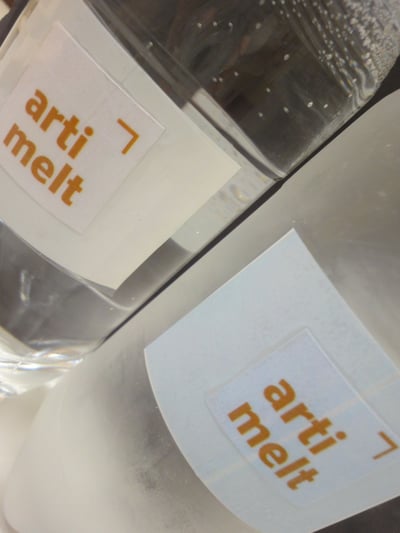You’re probably asking yourself what sepia has to do with adhesives. Isn’t this the Latin name of something you would usually find in the sea?
Read on to find out the answer in this blog!
First of all, you should be aware that artimelt is a manufacturer of hot-melt adhesives for niche applications. Commodities – in other words, run-of-the-mill adhesives – are not our thing. We are committed to finding the solution to your application problems with our adhesives. And these problems are many and varied.
But what does this have to do with artimeltsepia?
artimeltsepia is a range of hot-melt adhesives with a very special feature. In fact, this is the same feature that a cuttlefish (or in Latin, Sepia apama) has – it can change color.
Take a look at the this video.
Here you can see how a cuttlefish changes color in quick succession.Our products in the artimeltsepia range can do the same – a little slower, admittedly, but what counts is the end result.
But what do I need products like this for?
Imagine today was a hot summer’s day. The sun has been beating down for hours, and you start to feel thirsty. Time for a nice cool drink. But no, the bottle is too warm to enjoy properly. There’s nothing for it but to put it in the fridge to cool. But how can you tell when your drink is cold enough …
artimeltsepia color-changing adhesives can help here. A transparent label coated with adhesive from the artimeltsepia range shows when your drink has reached the right temperature. The adhesive is transparent at room temperature. However, as soon as the temperature drops below +8 °C, the label turns blue. A blue label is thus a sure sign that your drink is cool enough to enjoy!

How about another example?
Imagine you are a manufacturer of security products, with adhesives playing an important role in the overall security concept. As with many flexible products and components, adhesives become hard and brittle at low temperatures. In this case, the temperature is below the so-called service temperature. In extreme cases, this can lead to a loss of adhesion and the security function not working as it should. The result is product failure.
Let us explain here in more detail
Each adhesive has an optimal operating temperature. Firstly, the label or adhesive tape is applied. This is known as the application temperature. For adhesives used at room temperature, the minimum application temperature is approximately +10 °C. This means that the bond has to be made above this temperature, otherwise the adhesive does not achieve a sufficient initial adhesion and the bond is not made. If the bond is established successfully, adhesion can only be ensured within a certain temperature range. This range is known as the service temperature. For adhesives used at room temperature, this range is approximately -10 °C to +60 °C. Outside this range, the bond can fail – especially when it is subjected to force.
This is where the adhesives from the artimeltsepia range come into play. We have developed a product that is pink in color at room temperature. If the adhesive is now subjected to intensive cooling, it changes color from pink to violet and remains so when warmed back up to room temperature.
If the bond should fail, then you can determine whether the temperature has dropped below the service temperature of the adhesive according to the adhesive color.
A classic example of this can be found in sealing labels, which are used for maintaining warranty claims on electronic devices, among other applications. The consumer purchases an electronic device that is screwed together. If the screws are not sealed, then they can be removed and the device opened. If the device then no longer works properly, the consumer exchanges or returns it. Normal sealing labels can often be removed without noticeably affecting the sealing effect by subjecting them to low temperatures. The consumer can spray the label with cold spray, for example. The adhesive becomes brittle, loses its adhesion and can be removed undetected without leaving any residue. The label is reattached as soon as it has reached room temperature and the adhesive becomes sticky once again. The manipulation is undetectable.
cold
↓
This is not the case when using artimeltsepia. If the label is sprayed with cold spray, the adhesive color changes from pink to violet. While the label can still be removed undetected as before and reattached at room temperature, the change in color clearly indicates that a manipulation has taken place here.
These are just two of the possible applications for the artimeltsepia product range. We are sure that you will already have other applications in mind where artimeltsepia adhesives can be used.
Free selective adhesive properties
The adhesive properties can be freely selected here. You can choose between a strongly adhesive rubber-based adhesive with corresponding color-changing properties or a UV-curing product with moderate adhesive properties. When it comes to the possibilities, the sky is (almost) the limit.
Get in touch with our adhesive experts today.